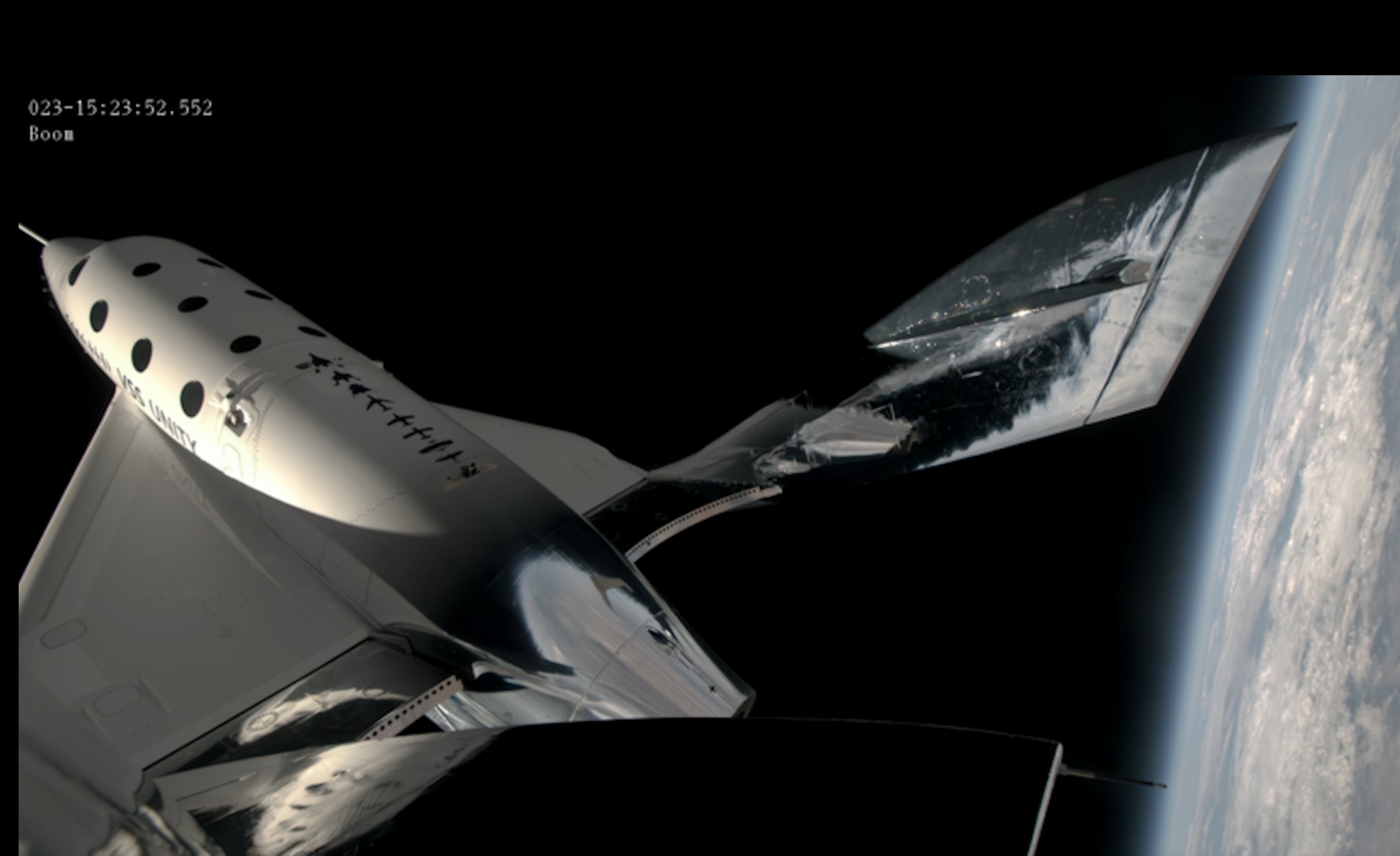
On a bright Friday morning last week, a Virgin Galactic spacecraft travelled 88 kilometres above Earth to the edge of space. On board were two Virgin Galactic pilots, an instructor and three passengers — and the remains of two ancient-human relatives that lived hundreds of thousands of years ago in southern Africa.
Everyone aboard VSS Unity — including the hominin remains — landed safely an hour after take-off. But the fossils’ journey has drawn extraordinary rebuke from archaeologists, palaeoanthropologists and other researchers. They say that it was an unethical publicity stunt that put priceless hominin fossils at risk, raising questions about the protection of cultural heritage in South Africa, as a government agency signed off on the mission.
“To treat ancestral remains in such a callous, unethical way — to blast them into space just because you can — there’s no scientific merit in this,” says Robyn Pickering, a geologist at the University of Cape Town in South Africa.
Precious bones
Other fossils — including dinosaur bones — have been taken into space on various missions since the 1980s, but these are the first ancient-hominin remains to leave Earth. They belong to Australopithecus sediba, which lived around 2 million years ago, and the roughly 250,000-year-old Homo naledi. Both species were found near Johannesburg in South Africa by teams led by Lee Berger, a palaeoanthropologist now at the National Geographic Society in Washington DC.
In July, the South African Heritage Resources Agency (SAHRA) in Cape Town granted Berger an export permit to transport an A. sediba shoulder bone and a H. naledi finger bone to New Mexico, where Virgin Galactic’s spaceport is located, and aboard the company’s craft. The fossils were carried on the flight by Tim Nash, a South African businessman who was one of the passengers.
Berger’s application said that scientific studies might be conducted on the fossils, but that this was not the main aim of the request. “Major media partners will assist in using this once in a lifetime opportunity to bring awareness to science, exploration, human origins and South Africa and its role in understanding Humankind’s shared African ancestry,” it said.
Pickering, who was part of the team that determined the age of A. sediba, says that such justifications don’t outweigh the risks of spaceflight, including the possibility of losing or damaging the remains. The shoulder bone is especially valuable because it was the first A. sediba fossil to be discovered and is the reference, or type specimen, that defines the species.
Yonatan Sahle, an archaeologist at the University of Cape Town, says that sending African fossils to space reminds him of colonial and neocolonial research practices, in which white, mostly European and American researchers bent African institutions to their will. “As someone who is African and who is based in an African institution, this is basically a perpetuation of past, very ugly aspects of palaeoanthropological research.”
On 13 September, the board of the European Society for the study of Human Evolution issued a statement questioning the mission: “We do not see the scientific merit of this project and question the ethics of potentially damaging these unique materials. We urge the responsible stewardship and protection of these irreplaceable scientific resources.”
‘Promotional benefit’
In response to researchers’ criticisms of the mission, SAHRA official Ben Mwasinga, said in a media statement that the agency was “satisfied that the promotional benefit derived was appropriately weighted against the inherent risk of travel of this nature”.
In a press release issued by the University of the Witwatersrand in Johannesburg, where the fossils are stored, Bernhard Zipfel, a palaeoanthropologist and the institution’s curator of collections, said that the fossils were chosen to go on the mission partly because they had been extensively documented in 3D scans, casts and photographs. (Zipfel did not respond to Nature’s request for comment.)
If fossils being well documented means that it’s acceptable to put them at risk, that could set a dangerous precedent, says Rachel King, an archaeologist at University College London who studies cultural-heritage policies in southern Africa. “If I document one of South Africa’s World Heritage Sites, could we then bulldoze it and put up a shopping mall?” she asks.
South Africa has long been considered a leader among African countries in its approach to protecting cultural heritage, and King was surprised that SAHRA granted Berger’s request to allow the fossils aboard a private spacecraft. “What are regulators for, if they’re going to let someone do this?” she says. “It’s potentially a pretty big thing, and a pretty big shift.”
A representative of the University of the Witwatersrand referred Nature to Berger, but he did not respond to Nature’s request for comment.
This article is reproduced with permission and was first published on September 13, 2023.
